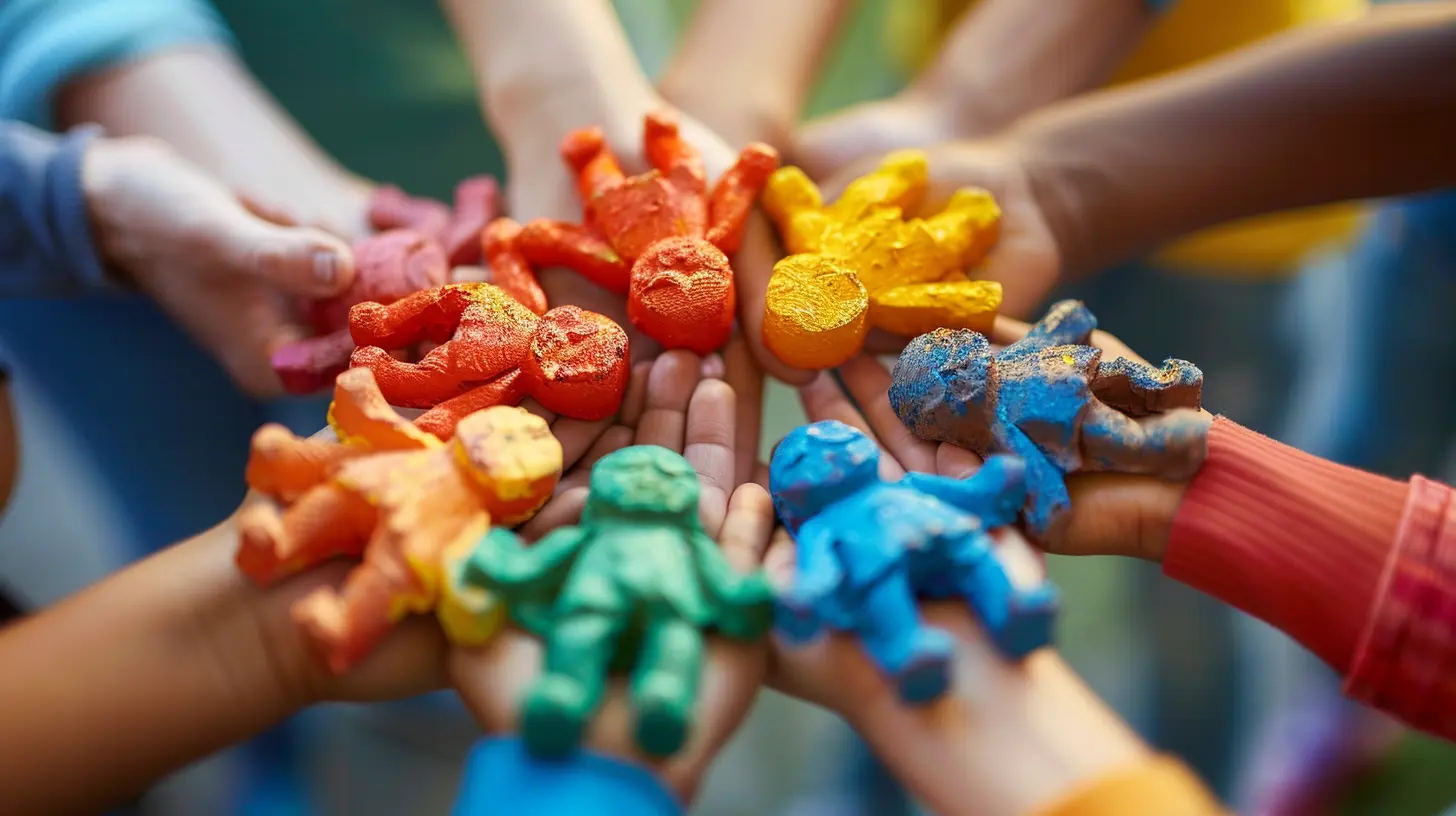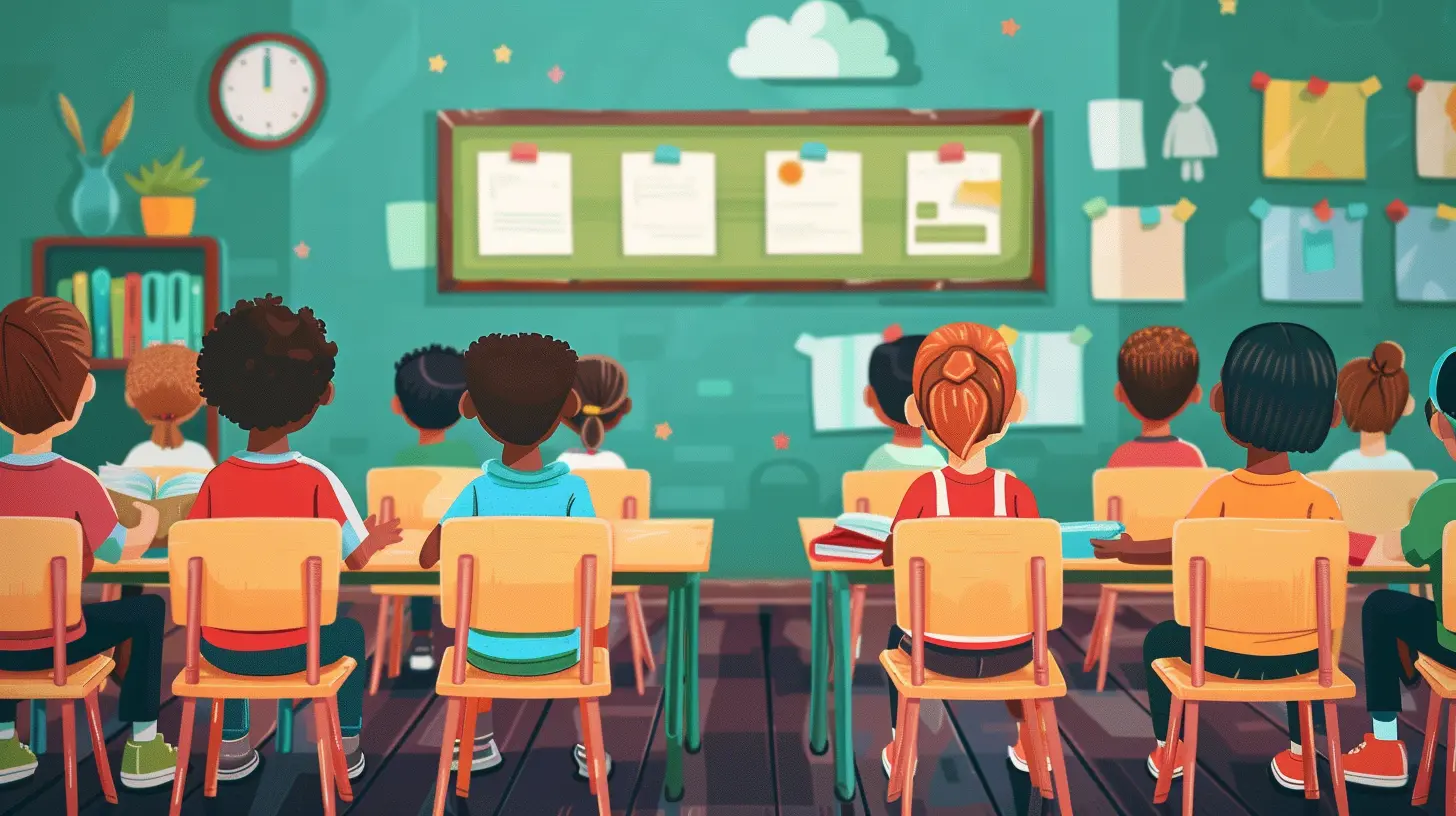How to Use Formative Assessment to Build Classroom Community
13 October 2025
In the bustling world of education, building a strong, positive classroom community isn't just nice—it’s necessary. It’s the secret sauce behind engaged learners, meaningful relationships, and lasting academic growth. But here's the twist: one of the most powerful ways to do this isn't through grand gestures. It's through something many teachers are already doing—formative assessment.
Yep! That quick exit ticket, that thumbs-up/thumbs-down moment, or that group discussion where students reflect—all of it can do more than guide instruction. It can also lay the foundation for a classroom where students feel seen, heard, and valued.
So pull up a chair, grab a cup of coffee (or tea), and let’s unpack how formative assessment can be your go-to tool to bring your students together and create a classroom community that thrives.
What Is Formative Assessment, Really?
Before we dive into community building, let’s get clear on what we’re working with.Formative assessment isn’t a pop quiz. It’s not about catching students off guard or slapping a grade on everything they do. Instead, think of it as a check-in, a way to gather feedback about student learning in real-time.
Formative assessments are low-stakes, often informal, and happen throughout the learning process. They're like little GPS recalculations—helping both teachers and students know where they are and where they’re headed.
Some common examples?
- Exit tickets
- Think-pair-share
- Quick reflection journals
- Online polls or quizzes (like Kahoot or Quizizz)
- Peer feedback
- One-on-one conferences
It’s not just about data. It’s about connection. And that’s where the magic happens.
Why Classroom Community Matters
Alright, so why are we talking about community anyway?Because students won't care about what you're teaching if they don't feel like they belong.
A strong classroom community:
- Fosters trust and safety
- Encourages risk-taking and honest learning
- Supports collaboration
- Reduces behavioral issues
- Boosts overall well-being and enthusiasm
When students feel like they’re part of something bigger than themselves—a classroom team—they’re more engaged, more motivated, and more respectful of each other. It’s a win-win.
The Connection Between Assessment and Community
Now, here comes the big idea: formative assessment isn’t just about checking for understanding. It can actually be the glue that holds your class together.When you create space for students to reflect, respond, and interact with each other and the material, you’re also building relationships. You're saying, “Your voice matters here.” You're showing that learning is a shared journey, not a solo mission.
And guess what? That message goes a long way in building community.
Let's look at how.
Strategy #1: Use Exit Tickets to Open Doors, Not Just Close Lessons
Most of us use exit tickets to wrap up a lesson and see if the content landed. But have you ever used them to open conversations?Try mixing in questions like:
- “What’s one thing you learned about a classmate today?”
- “Who helped you understand something?”
- “When did you feel most engaged today?”
These types of reflections don’t just review the lesson—they build social awareness and empathy. They make students reflect on their interactions and how they relate to the class as a whole.
Better yet, read a few responses aloud (anonymously, if needed) the next day. Celebrate kindness. Highlight moments of collaboration. Show that community is just as important as curriculum.
Strategy #2: Make Peer Feedback Safe and Supportive
Peer assessment can be a double-edged sword. Done poorly, it can lead to hurt feelings or vague comments. Done right? It creates a culture of support, accountability, and shared ownership of learning.Start by modeling constructive feedback. Use sentence starters like:
- “I noticed…”
- “I liked how you…”
- “Have you thought about…?”
Create group norms around kindness and curiosity. Assure students that feedback is a gift, not a judgment.
Over time, students begin to trust one another more. They realize they’re not in competition—they're in collaboration. That mindset shift is at the heart of a strong classroom community.
Strategy #3: Use Think-Pair-Share to Create Safe Spaces for All Voices
We all know that one student who’s always got their hand up—and the ones who never raise theirs. Think-pair-share opens the door for every student to engage, even the quiet ones.Here’s where formative assessment comes in: Use those paired conversations as informal checks for understanding. Walk around, listen in, ask clarifying questions.
But beyond that, recognize how powerful it is for students to talk to each other. They learn that their peers have great ideas. They learn to respect different perspectives. And they learn that their own voice matters.
It’s not just about answering a question. It’s about being heard and hearing others. That’s community.
Strategy #4: Use Reflection Journals to Build Trust
Journaling might seem old-school, but it’s a gold mine for formative assessment and relationship building.Ask questions like:
- “What’s a challenge you faced today?”
- “How did you help someone this week?”
- “What are you proud of?”
These reflections give students a chance to process not just the content, but their experience in class. And if you respond to a few entries each week (a quick sticky note can do wonders), you build that 1:1 connection that’s so vital.
Students learn that you care about them—not just their grades.
And let’s be honest: when students feel seen like that, they’re more likely to support each other too.
Strategy #5: Conduct Class Pulse Checks
Sometimes, the most powerful assessments aren’t academic at all. Periodically use quick surveys or check-ins to gauge how students are feeling.Try:
- Emoji check-ins: How are you feeling today? List options like 😊 😐 😢 😠
- “On a scale of 1–10, how connected do you feel to our class?”
- “What’s something we could do to make our class feel more like a team?”
These aren’t just feel-good exercises. They give you real data on how your community is doing—and what might need adjusting.
Even better? Act on the results. If students ask for more group activities, sprinkle a few in. If they’re feeling overwhelmed, give them space to breathe.
When students see that their feedback shapes their classroom experience, they feel empowered. And empowered students build stronger communities.
Strategy #6: Celebrate Growth, Not Just Performance
Formative assessment is all about growth. So why not celebrate it?Have a “Growth Wall” where students post things they’ve improved on. Or use shout-outs at the end of each week to highlight someone’s progress—academic or otherwise.
These celebrations foster a growth mindset, yes, but they also cultivate appreciation. Students begin rooting for each other. They recognize that everyone’s journey is different, and that success looks different for everyone.
That’s community.
Strategy #7: Let Students Co-Create Rubrics and Success Criteria
This one’s a game-changer. Instead of handing students a rubric, build one together.Ask:
- “What does a strong presentation look like?”
- “What should we be aiming for in our writing?”
- “How should we assess effort and teamwork?”
By involving students in the assessment process, you're handing them agency. You're saying, “We’re in this together.” They become more invested. More thoughtful. More responsible.
And more bonded as a group.
Plus, this creates a shared language around expectations. It reduces confusion and creates fairness—two more pillars of a solid classroom community.
Final Thoughts: It's the Small Things That Stick
There’s no magic switch that builds classroom community overnight. But when you use formative assessment with intention—when you focus on connection as much as comprehension—you create a classroom where students feel safe, seen, and supported.And that matters.
Because when students feel they belong, they show up as their full selves. They take risks. They help each other. They grow.
So the next time you do a quick check-in or a discussion prompt, remember: you’re not just assessing learning. You’re building your classroom family.
And that’s the kind of impact that lasts far beyond the final exam.
Quick Tips to Get Started
- Mix content and community questions in exit tickets.- Use peer feedback scaffolds to teach kindness.
- Incorporate regular class check-ins to spot red flags early.
- Read and respond to student reflections to build trust.
- Celebrate effort and growth, not just A’s.
Small steps, big results.
all images in this post were generated using AI tools
Category:
Formative AssessmentAuthor:

Zoe McKay
Discussion
rate this article
1 comments
Justice McGuire
Formative assessment not only gauges student understanding but also fosters a sense of belonging. By encouraging collaboration and open dialogue, educators can create an inclusive environment where students feel valued. This approach strengthens relationships and enhances learning, ultimately building a more vibrant classroom community.
October 24, 2025 at 2:42 AM

Zoe McKay
Thank you for highlighting the importance of formative assessment in fostering belonging and collaboration. It truly is integral to creating an inclusive and vibrant classroom environment!


